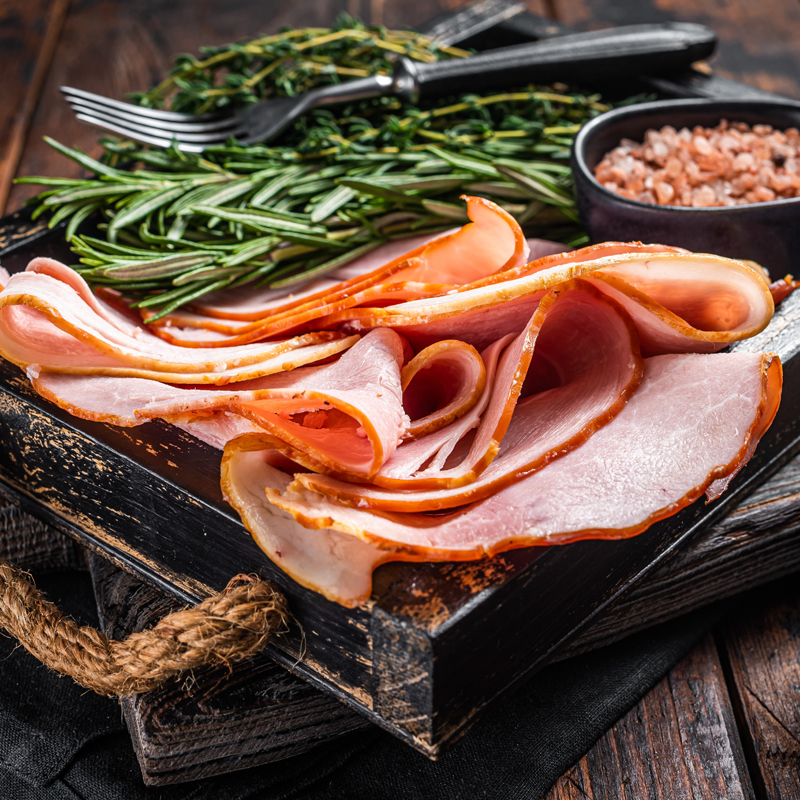
100 gr |
-- |
|
|---|---|---|
| Carbohydrate (gr) | 15.04 |
4928.47 |
| Protein (gr) | 3.59 |
1176.23 |
| Fat (gr) | 12.46 |
4083.43 |
| Fiber (gr) | 1.36 |
445.97 |
| Cholesterol (mg) | 14.64 |
4795.8 |
| Sodium (mg) | 325.27 |
106557.75 |
| Potassium (mg) | 392.16 |
128471.4 |
| Calcium (mg) | 78.15 |
25603.27 |
| Vitamin A (mg) | 46.04 |
15084.01 |
| Vitamin C (mg) | 6.16 |
2019.31 |
| Iron | 0.62 |
203.1 |
Meat ham, a popular type of cured meat, is made from the hind leg of a young cow. It undergoes a curing process where salt, nitrates, and a blend of spices are added to enhance its taste, texture, and shelf life. This preservation method gives the ham its distinct color and prevents bacterial growth, making it safe for longer storage.
The calories in meat ham are 106 calories per 100 grams.
Nitrates and nitrites are commonly used in processed meats such as ham, sausages, and salami. They help maintain the meat’s vibrant red or pink hue and prevent spoilage caused by harmful bacteria like Clostridium botulinum, which can cause botulism. However, when exposed to high heat, nitrates can convert into nitrosamines—compounds that have been linked to an increased risk of certain cancers.
To mitigate these risks, experts recommend consuming processed meats alongside foods high in vitamin C. Fruits and vegetables such as citrus fruits, bell peppers, and leafy greens can help inhibit nitrosamine formation, reducing potential health concerns.
Meat ham is a rich source of protein, essential for muscle growth and repair. It also contains important minerals like iron and zinc, which support immune function and overall well-being. However, due to its sodium content, excessive consumption may contribute to high blood pressure and cardiovascular issues. Moderation is key when including processed meats in a balanced diet.
For those who enjoy the taste of meat ham but want a healthier option, selecting nitrate-free or minimally processed versions is a better choice. Homemade or organic varieties often contain fewer preservatives and lower sodium levels. Additionally, pairing meat ham with fiber-rich foods, such as whole grains, fresh vegetables, and nuts, can improve digestion and overall nutrient absorption.
Despite the concerns surrounding processed meats, meat ham remains a flavorful and convenient protein source when consumed in moderation. By making informed choices and balancing its intake with nutrient-dense foods, individuals can enjoy its taste while maintaining a healthier diet.